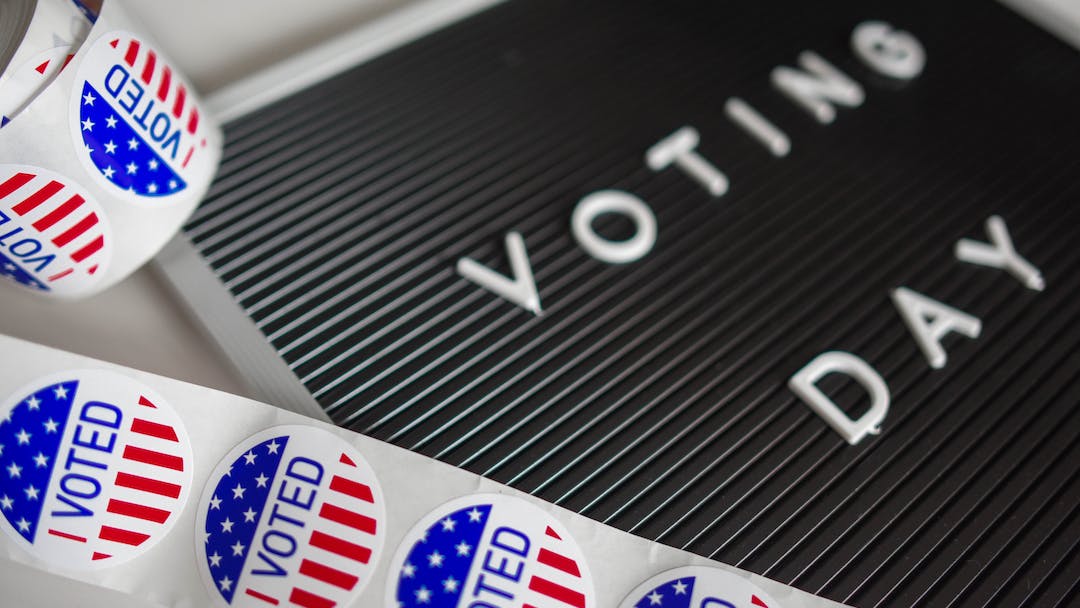No Results Found
The page you requested could not be found. Try refining your search, or use the navigation above to locate the post.

Recreational marijuana has been legalized in Ohio as voters overwhelmingly approved State Issue 2 on Tuesday. This groundbreaking decision now enables adults in Ohio to legally experience the advantages of marijuana for recreational purposes.
“Marijuana is no longer a controversial issue,” said Tom Haren, spokesman for the Coalition to Regulate Marijuana Like Alcohol, which gathered petitions to put the issue on the ballot.“
Ohioans demonstrated this by passing State Issue 2 in a landslide. Ohioans are being extremely clear on the future they want for our state: adult-use marijuana legal and regulated.”
Issue 2 permits adults 21 and over to legally use and grow marijuana, starting on Dec. 7, according to Haren.
With all precincts counted, the final, unofficial results from the Ohio Secretary of State indicate that the vote was 56.97% in favor of the measure and 43.03% against it.
The new law expands legal use beyond the medical marijuana law approved by the Ohio Legislature in 2016.
Opponents of Issue 2 included public health and mental health advocates, law enforcement, business groups, and stakeholders who expressed concerns about the potential health risks associated with marijuana.
They argued that legalizing this drug could result in marijuana companies becoming unjustly enriched, while also exposing children to potential risks. Additionally, opponents highlighted concerns that legalization may heighten the likelihood of crime, workplace injuries, and dangerous driving conditions.
Issue 2 will:
The page you requested could not be found. Try refining your search, or use the navigation above to locate the post.

Body camera footage is an invaluable resource for courts facing suppression motions, but it rarely serves as a stand-alone source of information about a warrantless search or seizure.
Here, the trial court was hamstrung in analyzing the validity of a warrantless search of defendant, Jeffery Scott Armstrong, and the subsequent seizure of a gun because the trial court was given no evidence other than body camera footage.
Despite that disadvantage, the trial court dutifully made findings of fact and ordered the suppression of the gun.
Because we conclude that the trial court’s findings of fact were not clearly erroneous and its conclusions of law were sound, we shall affirm the trial court’s suppression order.
On October 8, 2020, law-enforcement officers conducting a home-compliance check in the city of Detroit came upon a Jeep Cherokee parked on the street.
They spoke to a woman who was in the driver’s seat and to Armstrong, who was sitting in the front passenger’s seat. What piqued the interest of the law-enforcement officers at first was the scent of marijuana emanating from the Jeep.
Body camera footage shows the officers approaching the vehicle, speaking with both people in the vehicle, instructing Armstrong to get out of the vehicle, and ultimately finding a gun under the front passenger’s seat.
As a result, Armstrong was charged with carrying a concealed weapon, MCL 750.227, being a felon in possession of a firearm (felon in possession), MCL 750.224f, and possession of a firearm during the commission of a felony (felony firearm), MCL 750.227b.
Have you encountered legal issues related to DUI or lost your driving privileges in Michigan?
Call Our Office for a Free Case Evaluation
In response, Armstrong moved to suppress the gun as the fruit of a search that violated the Fourth Amendment to the United States Constitution.
In the trial court, both parties several times declined an invitation to hold an evidentiary hearing, stipulating instead to the use of body camera
footage as the evidentiary basis upon which the trial court should resolve Armstrong’s suppression motion.
Additionally, although no police reports concerning the search and seizure were filed in the trial court, the parties included quotes from the police reports in their briefs, so the trial court considered those excerpts from the police reports.
Relying upon that limited record, the trial court described the factual background of the suppression motion in the following terms:
On October 8, 2020, Corporal Eaton and Officers Genaw, Saad, Scott, and
Krzyak were driving down Seneca street in the city of Detroit to conduct a home compliance check.
Corporal Eaton observed a black Jeep Cherokee parked on Seneca street, with a woman in the driver’s seat and Armstrong in the front passenger seat.
According to Corporal Eaton, she smelled the scent of burnt marijuana as she drove past the black Jeep Cherokee. She parked her vehicle then walked behind the black Jeep Cherokee, exited, and approached the car.
The prosecution’s brief in support alleges that when Corporal Eaton asked Armstrong about the scent of marijuana, she observed a black handgun lying on the floorboard of the vehicle directly in front of Armstrong.
Prosecution also makes note that Corporal Eaton noticed Armstrong’s hand shaking when he was being questioned.
With the parties’ consent to rely on the body camera footage as evidence of the initial interaction between Corporal Eaton, the driver of the vehicle, and Armstrong,
the dialogue is detailed below:
In sum, based on the limited factual record to which the parties stipulated in the trial court, no finding of fact made by the trial court is clearly erroneous.
Therefore, we shall uphold the trial court’s finding of fact that “the firearm was not visible until Armstrong had already been removed
from the vehicle.”
Because the gun was not in plain view before defendant was unconstitutionally seized, the prosecution has provided no exception to the warrant requirement that justifies seizure of the gun.
Accordingly, the trial court properly granted defendant’s motion to suppress the gun, thereby making dismissal of the charges against defendant appropriate.
Read it all here
COA People vs Jeffery Armstrong-Smell of Weed-20221122_c360693_48_360693.opn
It is headed to the Michigan Supreme Court for Oral Arguments
MSC-People vs Jeffrey Armstrong 11-2023 165233_58_01 (PDF Order)
courts.michigan.gov/c/courts/coa/case/360693 (MSC Page)
The page you requested could not be found. Try refining your search, or use the navigation above to locate the post.

Vote Authorizes Judges to Reduce Sentences for Eligible Incarcerated Persons Beginning February 1, 2024 Should Guidelines Become Effective
WASHINGTON, D.C. — Today the Commission, by a majority vote, allowed for delayed retroactive application of Amendment 821 relating to criminal history—meaning that certain currently incarcerated individuals could be eligible for reduced sentences made effective beginning on February 1, 2024 (unofficial text). The Commission also adopted its next set of policy priorities that include, among other things, reviewing and potentially amending how the guidelines treat acquitted conduct for purposes of sentencing as well as assessing the degree to which certain Bureau of Prisons practices are effective in meeting the purposes of sentencing.
Equipped with a quorum of commissioners for the first time since 2018, the Commission voted in April to promulgate amendments to the federal sentencing guidelines—including Amendment 821 providing for targeted, evidence-based changes to certain criminal history rules. Because two parts of that amendment reduce the sentencing range of future defendants, the Commission is required by law to consider whether judges can extend those reductions to previously sentenced individuals.
The Commission voted to delay implementation of any order granting such reduced sentences to ensure that, to the extent practicable, all individuals who are to be released have the opportunity to participate in reentry programs and transitional services that will increase the likelihood of successful reentry to society.
U.S. District Judge Carlton W. Reeves, Chair of the Commission said, “Our decision today is one that brings hope to thousands of currently incarcerated people and their families. We listened to a full spectrum of views and considered the full costs associated with incarceration balanced with the time needed to review petitions and prepare for successful reentry.”
Part A of Amendment 821 limits the overall criminal history impact of “Status Points” at §4A1.1. Part B, Subpart 1 of Amendment 821 creates a new Chapter Four guideline at §4C1.1 decreasing by two the offense levels for defendants who did not receive any criminal history points and whose instant offense did not involve specific aggravating factors.
Judge Reeves added, “These prospective changes to the criminal history rules made by the Commission in April reflect evidence-based policy determinations that apply with equal force to previously sentenced individuals. Applying these changes retroactively will increase fairness in sentencing. At the same time, the 3-month delay will help ensure that individuals released based on our decision today receive the benefit of reentry programs and transitional services essential to support their successful reentry to society, which at the same time promotes public safety.”
The Commission estimated in its July 2023 Impact Analysis that retroactive application would carry a meaningful impact for many currently incarcerated individuals:
11,495 incarcerated individuals will have a lower sentencing range under Part A of Amendment 821 relating to “Status Points” with a possible sentence reduction of 11.7%, on average.
7,272 incarcerated individuals would be eligible for a lower sentencing range based upon the established criteria under Part B of Amendment 821 relating to “Zero-Point Offenders” with a possible sentence reduction of 17.6%, on average.
Today’s vote concludes two months of deliberations and the first amendment year of policy work for the commissioners, who were all confirmed last August. As part of its deliberations, the Commission received expert testimony and public comment from a wide spectrum of stakeholders, including senators, judges, lawyers, religious leaders, doctors, professors, advocates, victims, families, and incarcerated individuals.
Charged with a Crime?
Lost Your License?
Conspiracy or CCE?
Thought Crimes?
Call Our Office for a Free Case Evaluation
This year’s guideline amendments are with Congress for a 180-day review period ending November 1, 2023. If Congress does not act to disapprove the amendments, courts can begin considering petitions for sentence reductions and could order a reduced term of imprisonment effective February 1, 2024 or later.
Today, the Commission also finalized policy priorities for the amendment year ending May 1, 2024. In light of the 40th anniversary of the Sentencing Reform Act (SRA), the Commission anticipates undertaking a number of projects examining the degree to which current sentencing, penal, and correctional practices are effective in meeting the purposes of sentencing as set forth in the SRA.
Among these issues, the Commission will work to assess the degree to which certain practices of the Bureau of Prisons are effective in meeting the purposes of sentencing as set forth in 18 U.S.C. § 3553(a)(2). The Commission will also compile and disseminate information on court-sponsored programs relating to diversion, alternatives-to-incarceration, and reentry.
The Commission will also review and potentially amend how the guidelines treat acquitted conduct for purposes of sentencing. The Supreme Court recently denied several petitions for writs of certiorari related to the use of acquitted conduct. In issuing the denials, three Justices supported the denial to allow the Commission more time to address the issue. “Last year’s amendment cycle was busy and abbreviated. The Commission appreciates the opportunity to give proper attention to acquitted conduct, and we will do so this year,” said Judge Reeves.
The Commission will continue to examine the career offender guidelines, including updating the data analyses and statutory recommendations made in the Commission’s 2016 report to Congress entitled Career Offender Sentencing Enhancements. The Commission will also continue its consideration of alternative approaches to the “categorical approach” through workshops convened to discuss the scope and impact of the career offender penalty enhancements.
The Commission will further continue its research agenda through examination of various issues, including methamphetamine offenses, sentencing differences for cases disposed of through trial versus plea, and sentences involving youthful individuals.
The Commission invited public comment on its tentative list of policy priorities in June. “We are grateful for the volume of comment the Commission received regarding priorities for the coming year,” said Chair Reeves. “We look forward to continued input from the public as we work through this year’s priorities.” A compilation of public comment can be reviewed here.
Visit www.ussc.gov for more information about the amendment process and the changes approved today.
The page you requested could not be found. Try refining your search, or use the navigation above to locate the post.

When it comes to enforcing drugged driving laws, police and employers face a unique challenge with marijuana. Unlike alcohol, which is metabolized and eliminated relatively quickly, THC, the psychoactive compound in marijuana, can remain detectable in the blood for several days or even weeks after use.
This is because THC is highly fat-soluble, meaning that it dissolves easily in fat cells. Once THC is absorbed into the bloodstream, it is distributed throughout the body, including the fat cells. When THC reaches the brain, it binds to cannabinoid receptors, producing the intoxicating effects associated with marijuana use.
As the intoxicating effects of THC wear off, it is released from the brain and redistributed to other tissues, including the fat cells. THC can be stored in fat cells for weeks or even months, and it is released slowly back into the bloodstream over time.
This means that a blood test for THC can detect past marijuana use, even if the individual is no longer under the influence. This poses a challenge for law enforcement and employers, who may want to use blood tests to identify drivers or employees who are currently impaired by marijuana.
A number of studies have investigated the relationship between THC blood levels and impairment. One study found that THC blood levels above 5 ng/mL were associated with an increased risk of impaired driving performance. However, another study found that some individuals with THC blood levels below 5 ng/mL were still impaired, while others with THC blood levels above 5 ng/mL were not impaired.
These findings suggest that THC blood levels are not a reliable indicator of impairment. Other factors, such as individual metabolism, tolerance, and route of administration, can also play a role.
Implications
The limitations of THC blood tests for detecting impairment have important implications for law enforcement and employers. Law enforcement officers should not rely solely on blood tests to determine whether a driver is impaired by marijuana. They should also consider other factors, such as the driver’s behavior and performance on field sobriety tests.
Employers who use blood tests to screen employees for marijuana use should be aware that a positive test result does not necessarily mean that the employee is impaired at work. Employers should have a clear policy in place for responding to positive drug tests, and they should take into account all relevant factors, such as the employee’s job duties and performance.
Conclusion
THC detection in blood is a complex issue with important implications for law enforcement and employers. It is important to understand the limitations of THC blood tests and to use them in conjunction with other information to assess impairment.
The limitations of THC blood tests for detecting impairment have important implications for law enforcement and employers. Law enforcement officers should not rely solely on blood tests to determine whether a driver is impaired by marijuana. They should also consider other factors, such as the driver’s behavior and performance on field sobriety tests.
Employers who use blood tests to screen employees for marijuana use should be aware that a positive test result does not necessarily mean that the employee is impaired at work. Employers should have a clear policy in place for responding to positive drug tests, and they should take into account all relevant factors, such as the employee’s job duties and performance.
Conclusion
THC detection in blood is a complex issue with important implications for law enforcement and employers. It is important to understand the limitations of THC blood tests and to use them in conjunction with other information to assess impairment.
THC detection in blood is a complex issue with important implications for law enforcement and employers. It is important to understand the limitations of THC blood tests and to use them in conjunction with other information to assess impairment.
Legal Update No. 153 (01/2023)
Legal Update No. 150 (01/2022)
Legal Update No. 148 (09/2021)
The page you requested could not be found. Try refining your search, or use the navigation above to locate the post.

The federal U.S. Sentencing Commission (USSC) has approved a revised amendment to sentencing guidelines, advising judges to adopt a more lenient approach towards prior marijuana possession offenses.
Members of the commission voted to approve a range of amendments to the current guidelines, incorporating a multi-part revision of criminal history.
This revised version now encompasses cannabis possession as a compelling illustration of an offense that typically necessitates contemplation for sentencing discretion.
As it currently stands, federal judges are instructed to consider previous convictions, which include cannabis offenses at the state level, as aggravating factors when determining sentencing for new cases.
But as legalization of marijuana expands to more states, advocates have been advocating for revised guidelines to prevent an individual’s marijuana-related record from contributing criminal history points that could result in harsher sentencing.
The proposal does not aim to completely eliminate marijuana convictions as a factor in criminal history. However, it suggests modifying the commentary within the guidelines to consider instances where a downward departure from the defendant’s criminal history may be appropriate, specifically mentioning sentences resulting from possession of marijuana offenses.
“While marihuana remains a Schedule I controlled substance under the federal Controlled Substances Act (CSA), subjecting offenders to up to one year in prison (and up to two or three years in prison for repeat offenders), many states and territories have reduced or eliminated the penalties for possessing small quantities of marihuana for personal use,” it notes.
The term ‘downward departure’ refers to situations where federal judges exercise their discretion to impose sentences that are below the recommended minimum under current guidelines.
It is crucial to recognize and explicitly acknowledge that mere possession of cannabis, without any intent to sell or distribute it to others, presents a compelling case that warrants leniency in sentencing.
By doing so, we uphold the principle of fairness and ensure that appropriate discretion is exercised in such circumstances.
USSC’s report in January exposed a disturbing reality: countless individuals faced harsher federal prison sentences as a consequence of their prior convictions on cannabis possession charges in states that have since enacted reforms to marijuana laws.
The revised guidance is on track to be presented to Congress by May 1 2023, and once accepted without opposition from lawmakers, the amendment will officially take effect on November 1.
Follow up…
The page you requested could not be found. Try refining your search, or use the navigation above to locate the post.

October 10, 2023
LANSING – Senate Bills 395-396 bring needed changes to Michigan’s time-intensive educator evaluation system and will allow teachers and school administrators to spend more time focused on students, according to the Michigan Department of Education.
“This legislature has accomplished a great deal this session in terms of much-needed investments in education funding and in addressing flaws in education policy,” saidState Superintendent Dr. Michael Rice. “Improving educator evaluation laws will be the next major legislative effort to improve public education for students.”
This effort to improve educator evaluation laws is critical for at least two reasons, both associated with time—for children to learn and teachers to teach, Dr. Rice said.
“First, it is vitally important because we have spent so much time evaluating staff, not to thebenefitof children but rather at theexpenseof time that could and should have been spent educating children,” Dr. Rice said. “Bottom line–we need to pour more time into teaching children.”
The second reason according to Dr. Rice is that the state legislature will likely not revisit this topic for several years. “What we do on this topic now will affect our children for a decade,” he said.
The bills before the Senate Education Committee would provide the opportunity for effective teachers to be formally evaluated every three years instead of annually or biennially, but would permit more frequent evaluation if necessary; and provide school administrators time to have a more significant focus on the needs of inexperienced and otherwise struggling staff who require more assistance to become effective teachers of children.
Have you been charged with a crime?
Have your rights been violated?
Have your driving priviledges been revoked?
Has your professional license been suspended?
Call our office to see if we can help
Komorn Law 248-357-2550
Dr. Rice said that the committee is making strong progress in improving educator evaluations in Michigan, and that he appreciated the continued work being done in having a measure of student growth or student learning objective included in the educator evaluation process.
“Although the state summative assessments should never have been part of educator evaluations and should be removed from the evaluation process, we believe strongly that some portion of educator evaluations should be associated with a student growth or student learning objective measure, locally determined between teacher and administrator, based on the teachers’ subjects, grade levels, and individual goals,” Dr. Rice said.
“This is a matter of student growth as well as the professional growth of educators,” he said. “We have to get it right.”
The Senate Education Committee heard testimony on Senate Bills 395-396 today and is expected to take action on the legislation soon.
Related News
The page you requested could not be found. Try refining your search, or use the navigation above to locate the post.